Cheese-stuffed ravioli is surprisingly simple to make! With just 10 simple ingredients that are easy to find at any grocery store, you can make homemade pasta in no time. Making pasta from scratch might sound daunting, but I promise it’s an achievable, fun, and rewarding experience with my foolproof recipe. From mixing and kneading the perfect pasta dough to stuffing and sealing these little parcels of deliciousness, I detail every step so you end up with perfect cheese ravioli every time.
Whether you’re a seasoned pasta pro or a curious newbie in the kitchen, this 3 cheese ravioli recipe is designed for everyone to enjoy the process. And if you’re a busy bee juggling a crazy schedule, here’s a little secret: they can be prepped ahead of time and frozen, ready to be summoned to your dinner table whenever you crave a taste of homemade comfort. For more pasta recipes, check out my Gnocchi, Cajun Shrimp Pasta recipe, and Baked Rigatoni next!
What You Need To Make This Recipe
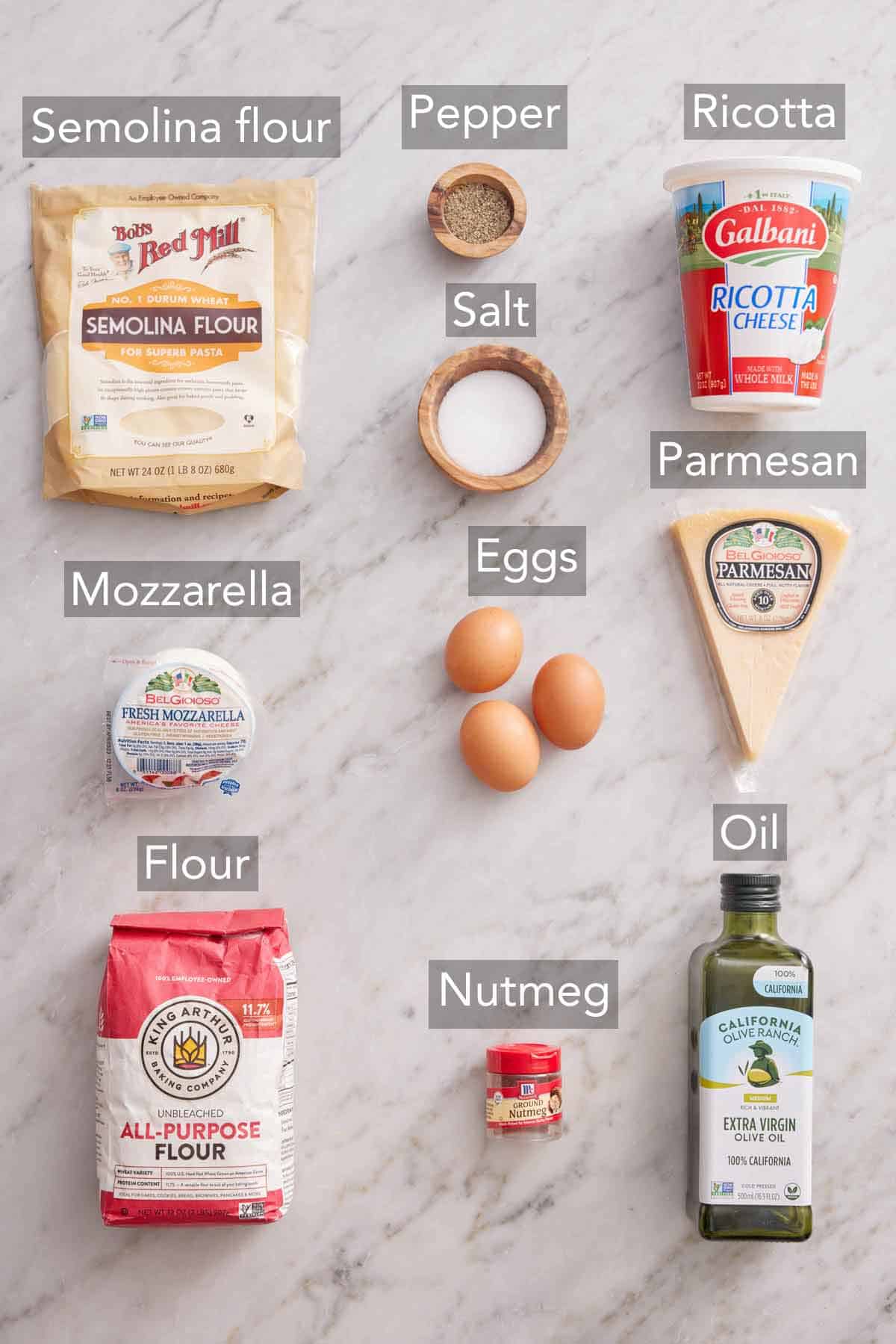
All-purpose flour — you only need plain flour to make the best homemade pasta dough around. While you can absolutely use 00 flour (double-zero flour), which has a higher protein content than all-purpose, I find the basic plain flour makes an incredibly delicious homemade pasta without having to source a specialty ingredient.
Olive oil — feel free to use either regular or extra virgin, depending on what you have on hand.
Eggs – I use large eggs. Because the ingredients in homemade pasta are so simple, I’d recommend you splurge on high-quality eggs, like pasture-raised or free-range eggs. Plus, a super orange-colored yolk will make the most beautiful, golden pasta.
Semolina flour — this helps prevent the dough from sticking to your work surface or to itself without adding too much extra flouriness that could make the dough tough. Its slightly granular nature acts almost like little ball bearings under the pasta, keeping things moving smoothly. You can normally find this with the other flours at most grocery stores.
Whole milk ricotta cheese — opting for full-fat ricotta yields a more luscious cheese filling. If you’re having trouble finding ricotta, you can blitz full-fat cottage cheese in a high-powered blender until mostly smooth.
Parmesan cheese — you can swap in another hard-aged, salty, firm cheese like pecorino or grana padano if you prefer. Just make sure you grate it fresh; the pre-grated shreds never melt properly.
Fresh mozzarella — I love the mild, milky, melty quality of fresh mozzarella. You’re welcome to use regular block mozzarella if that’s all you have.
Nutmeg – a few grates of this warming spice adds a subtle sweetness and depth of flavor to your cheese ravioli. If possible, buy whole nutmeg and grate it yourself for the best flavor.
How To Make Cheese Ravioli
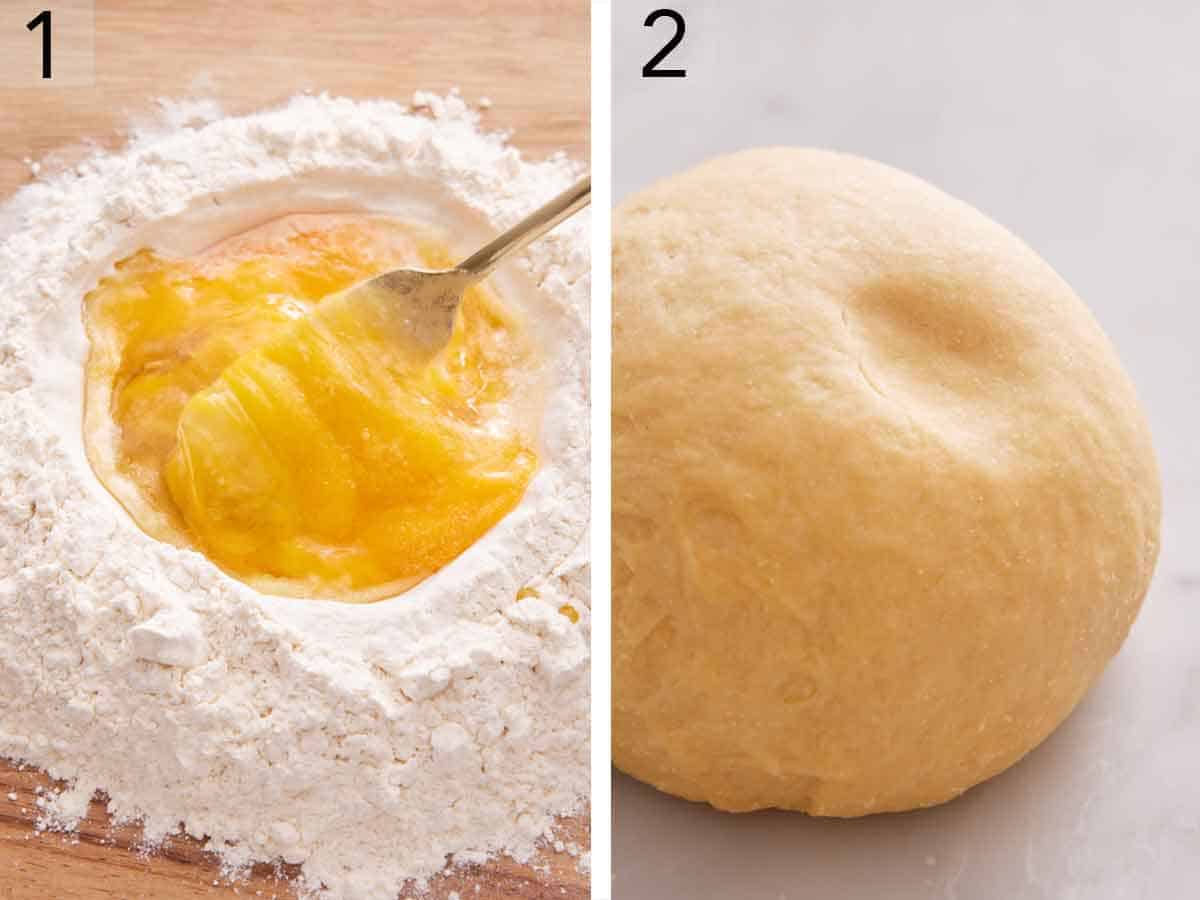
1. On a smooth, clean work surface, place flour in a mound. Create a well in the center of the flour large enough for the wet ingredients (the well should be wider than it is tall with enough flour at the edges to support the wet ingredients when mixing). Add the olive oil and salt and crack the eggs into the well. Using a fork, start beating the egg mixture slowly, gradually incorporating the flour from the inside, being careful not to break the well. Once the egg mixture is thickened and a pale yellow color, break the well and begin mixing in all of the flour.
2. Using a bench scraper or floured hands, scoop and fold the mixture together until a dough forms. Knead dough by hand until smooth and the dough springs back when poked, about 10 to 15 minutes. (it will start out pretty stiff and soften as you knead.) Wrap the dough tightly in plastic wrap and rest at room temperature for at least 1 hour and up to 3 hours.
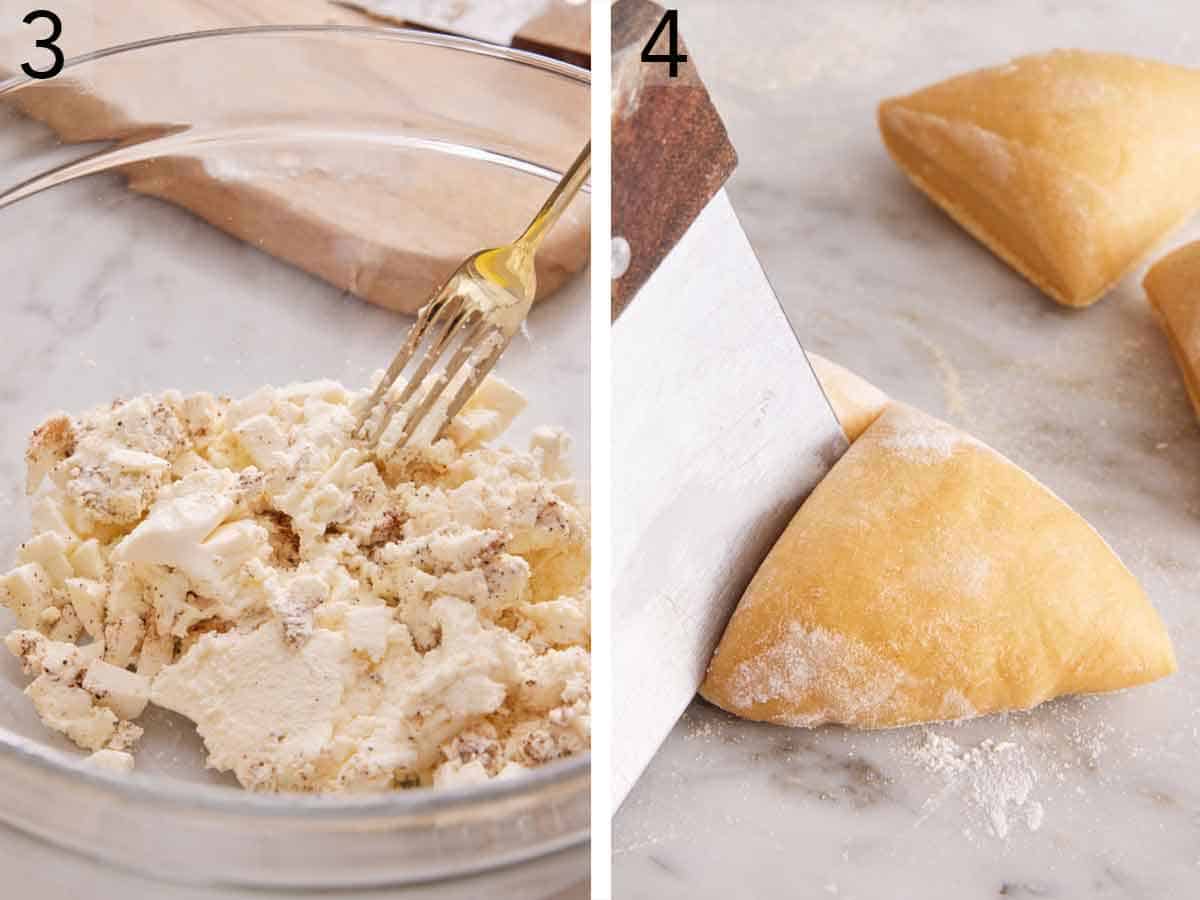
3. In a small bowl, stir together the cheeses, nutmeg, salt, and pepper. Transfer the mixture to a piping and refrigerate until ready to use.
4. Line a baking sheet with parchment paper and lightly dust with semolina flour. Divide the dough into 4 equal pieces and loosely cover with plastic wrap. Remove one piece of dough and press it into a rectangle, about ¼ inch thick. Sprinkle with semolina flour.
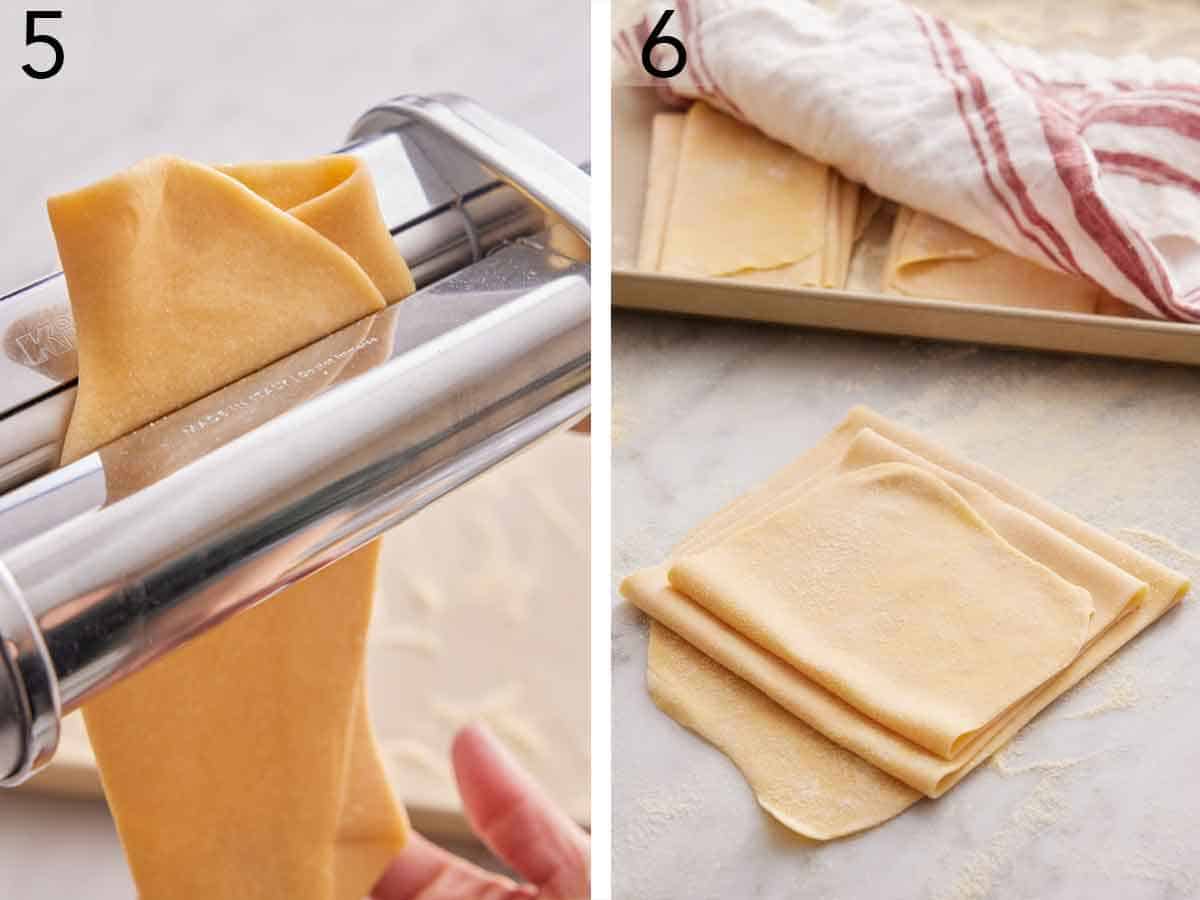
5. With the pasta rollers on their widest setting (#1 on a KitchenAid), pass the dough through the pasta machine. Fold the dough in half, and pass through again. Repeat this process once more. Pass the dough through the widest setting 2 more times without folding, making sure the dough is the width of the rollers. Adjust the rollers to the next widest setting (#2 on a KitchenAid). Sprinkle dough with semolina flour and pass through the roller twice. Adjust rollers to the next widest setting, and pass the dough through twice. Continue this process until the rollers are in their thinnest setting (#8 on a KitchenAid).
6. Sprinkle the pasta sheet with semolina flour and gently fold to fit the prepared sheet tray. Cover with a tea towel to keep it from drying out. Repeat this process with the remaining 3 pieces of dough.
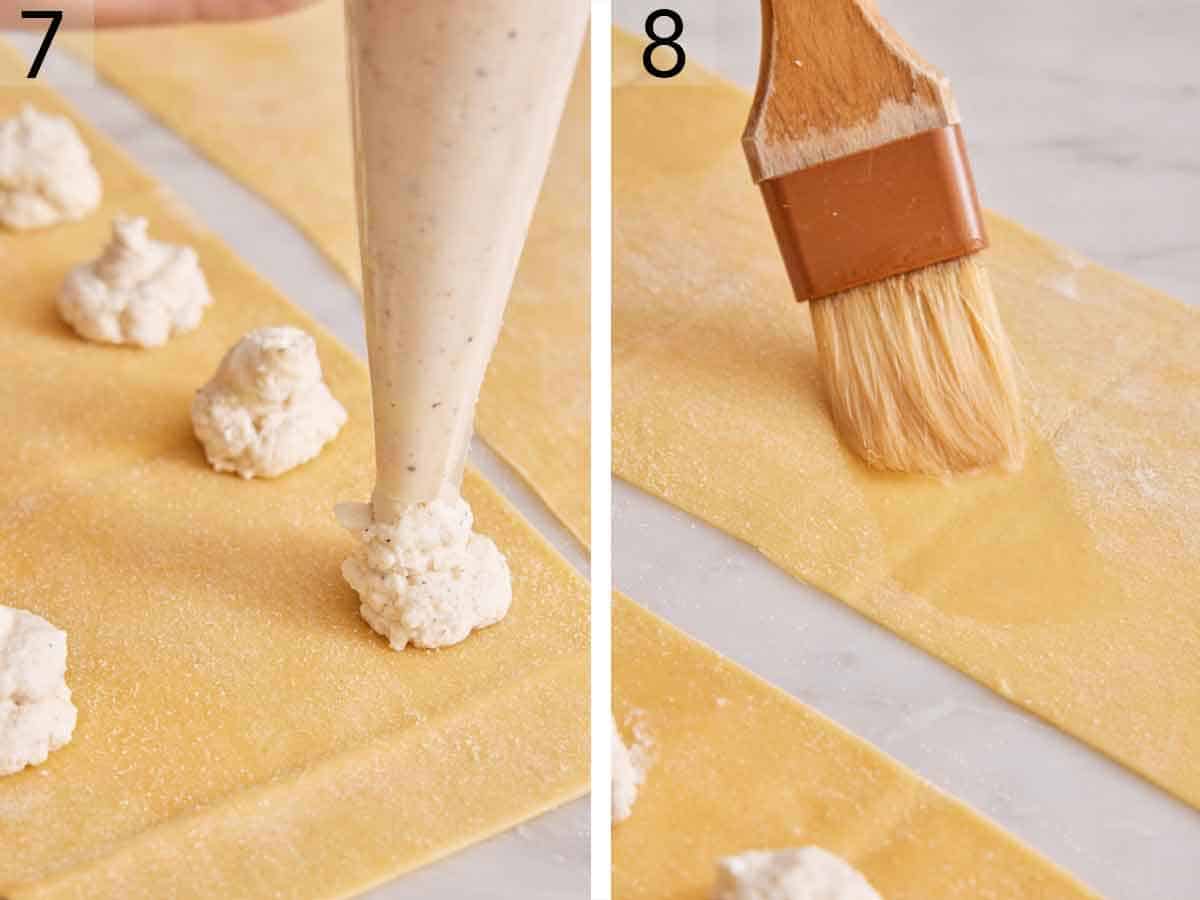
7. On a clean work surface, lay 1 pasta sheet lengthwise. Place another pasta sheet directly above the first so they are parallel to each other. Trim any uneven edges so the sheets are the same size. Brush any excess semolina flour off both sheets. On the first pasta sheet, pipe 2 rows of filling into roughly 1½-teaspoon-mounds about 1½ inches apart, leaving at least a ½-inch border on the edges of the pasta sheet.
8. Brush the second pasta sheet lightly with water. Immediately place the second sheet, watered-side-down, on top of the first sheet. Carefully press to seal around each mound of filling, making sure to push out as much air as possible. (Air bubbles can cause the ravioli to break when boiled.)
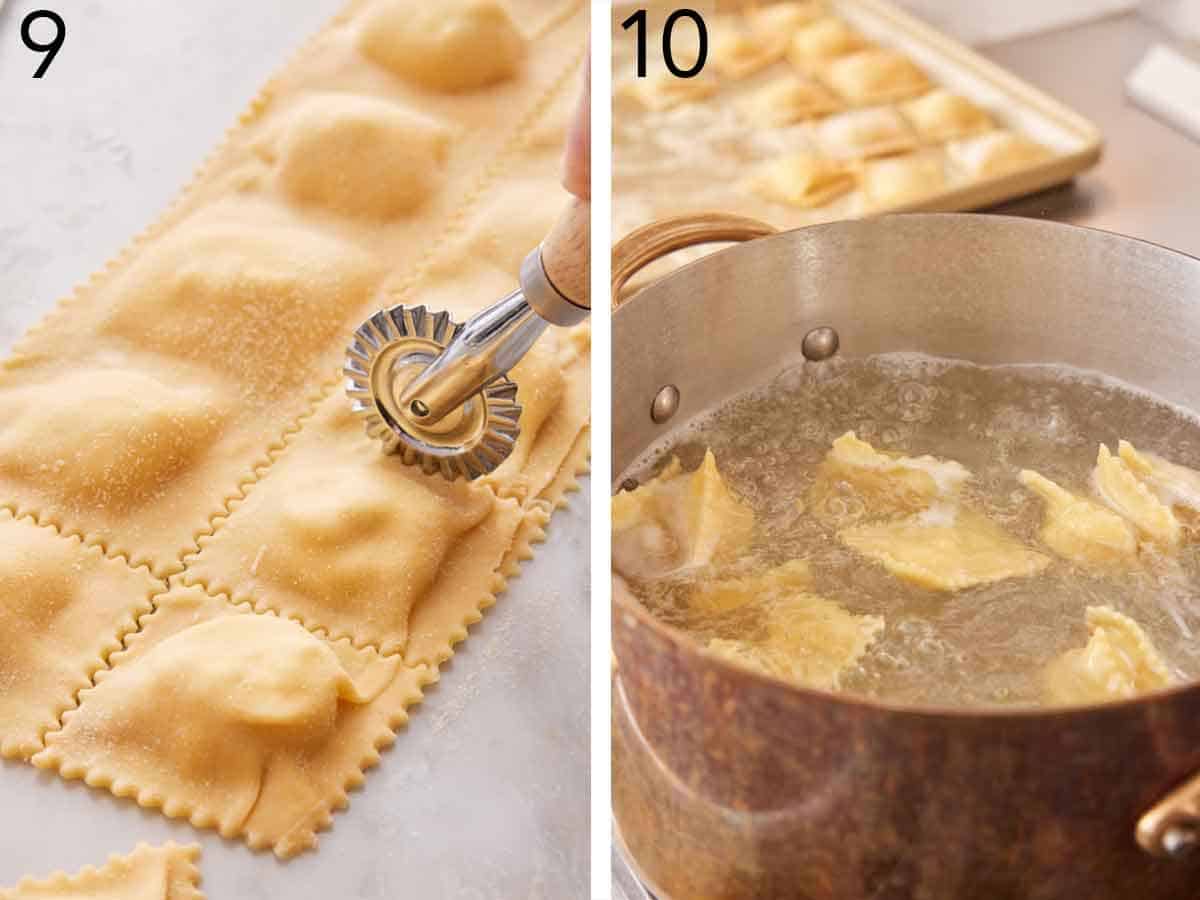
9. Using a pastry cutter or knife, carefully trim the outside edges of the pasta sheet to create clean, even sides. Next, cut lengthwise between the two rows of filling. Finally, cut vertically to separate into individual ravioli. Place on the prepared baking sheet and sprinkle with semolina flour. Repeat the assembly with the remaining sheets of pasta. Allow the ravioli to rest uncovered in a single layer and dry slightly before boiling, about 15 to 20 minutes.
10. Bring a large pot of water to a boil and salt heavily. Reduce the heat to medium. Working in two batches, carefully drop the ravioli into the gently boiling water. Simmer for 3 to 4 minutes, gently stirring occasionally. Remove the cheese ravioli from the water with a slotted spoon and immediately place them in the desired sauce. Serve immediately, with your favorite sauce and a garnish of fresh basil.

Pro Tips For Making This Recipe
- Precision is key. It’s important to make sure the pasta sheets are the same width, so don’t skip trimming them! I divided my dough by weight to ensure exactly equal pieces. First, weigh the whole dough ball and divide it by four. Then, cut the dough balls into quarters and check each piece for similar weight. You can also eyeball it if you don’t have a scale, and your pasta will still turn out delicious!
- Let them chill. Drying the ravioli a bit before boiling gives the pasta a much better texture. It can be slightly gummy if you drop them into the water immediately after you cut them.
- Freeze for later. If not serving immediately, allow the cheese ravioli to dry for about 30 to 40 minutes on the counter and place them in the freezer in a single layer to prevent sticking. Freeze until solid, then either wrap the baking sheet tightly or transfer the ravioli to a freezer-safe airtight container. Boil frozen ravioli without defrosting, increasing the cooking time by a few minutes.
- Use your hands, not your food processor. Some pasta recipes have you use a food processor, but I find the machine to be too powerful to yield consistently tender results. I suggest sticking with the old-fashioned method described above. And as a bonus, you don’t have to clean an extra appliance!
- Your pasta dough should be smooth and pliable, but not too sticky. If it’s too wet, add a bit more flour; if it’s too dry, add a touch of water. The perfect dough will form a smooth ball after kneading and will spring back after you press it with your finger.
- Use semolina flour for dusting your work surface and rolling pin. It prevents sticking and adds a nice texture to your ravioli without making them too floury. If you don’t have any, or can’t find it, use more all-purpose flour.
- Thin but sturdy. Roll your pasta dough thinly for delicate ravioli. Your pasta roller will be the perfect guide, so just follow the steps as directed in the recipe!
- Be generous with your filling, but don’t overfill. Too much filling can cause the cheese ravioli to burst during cooking. A teaspoon or a small cookie scoop can help you get a consistent amount.
- Seal it right. After adding your filling, moisten the edges of the pasta dough with a bit of water before sealing, which acts like a glue. Press firmly to seal, ensuring there are no air pockets, which can cause the ravioli to burst.
- Salt your pasta water. When cooking ravioli, use a large pot of lightly simmering, salted water. Generally, I use 1 tablespoon of salt for every 3 quarts, or 12 cups, of water. Make sure the water is simmering, not at a vigorous boil- too hard and it can cause the ravioli to break apart. They generally cook quickly, floating to the top when done.
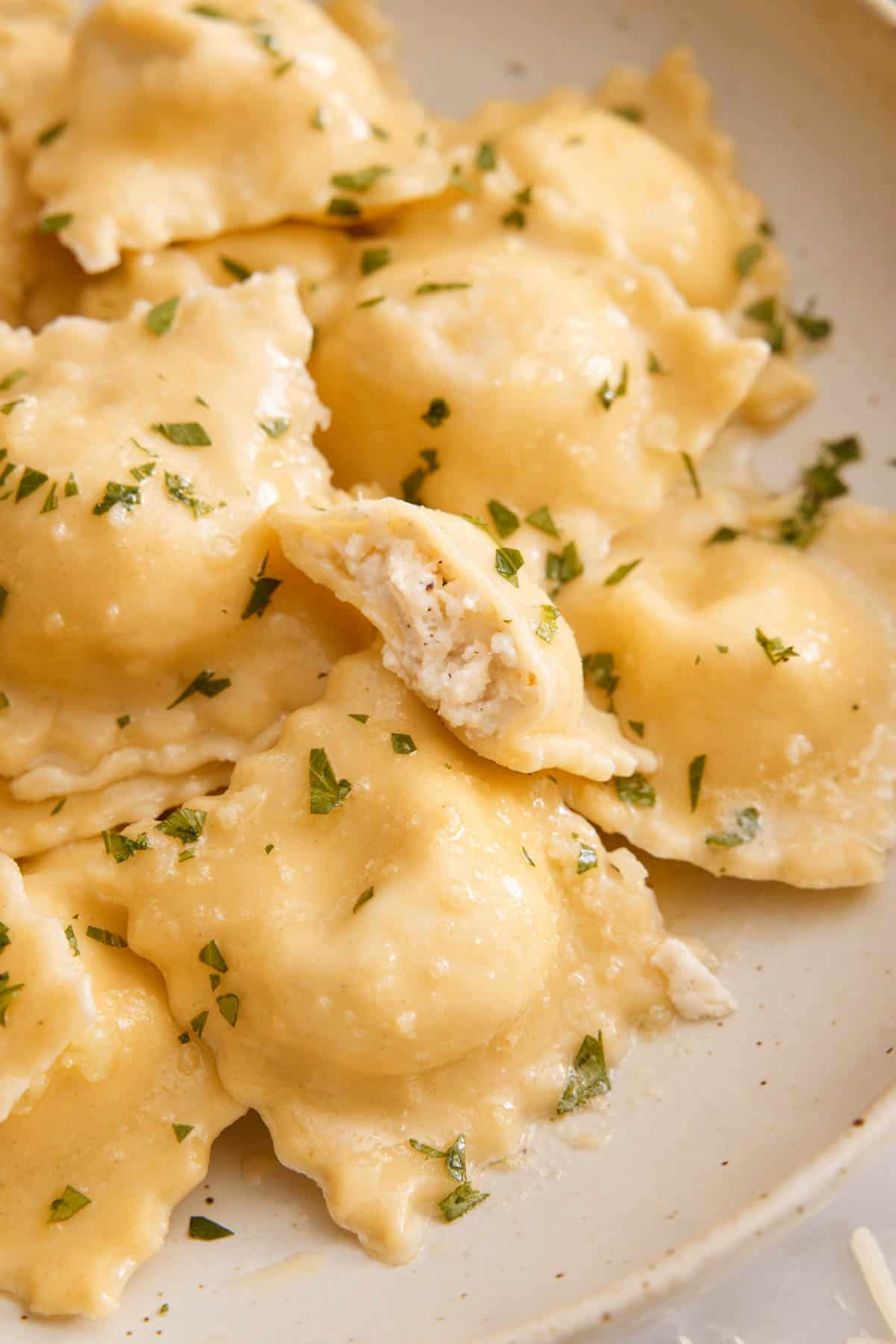
Frequently Asked Questions
I’m partial to the trio of creamy ricotta, salty parmesan, and melty mozzarella, but there are tons of options to play with. For a richer filling, you might try incorporating gorgonzola or fontina. For a tangier twist, goat cheese can be a wonderful addition. Experimenting with different cheeses like pecorino, asiago, or even smoked cheeses can lead to delicious discoveries.
Not for this filling recipe! Most ricotta you find in the grocery store is thick enough to hold up to scooping.
Yes! While fresh pasta isn’t hard like dried pasta and doesn’t take as long to cook, it is still raw food. Boiling it will cook and tenderize the pasta. I recommend having your sauce ready to go once you drop your cheese ravioli into the boiling water since they only take a few minutes to cook. Then you can transfer them with a slotted spoon straight from the pot to the sauce.
For classic cheese ravioli, a simple yet elegant tomato or marinara sauce works wonderfully, highlighting the cheese without overpowering it. If you’re looking for something creamier, make the rich sauce from my Fettuccine Alfredo and toss the ravioli in it instead of the long noodles. For a fresher, more herbaceous note, consider a basil pesto or the brown butter sage sauce from my sweet potato gnocchi. Or go classic and hearty with a tomato-based spaghetti sauce.
I suggest drizzling any leftover boiled ravioli that doesn’t already have a sauce on it with a touch of olive oil before storing it in an airtight container in the fridge. This should help them keep from sticking together as they cool. When you’re ready to serve, just zap the leftovers in the microwave or gently warm them on the stovetop in a skillet with your preferred sauce.
If you’ve tried this Cheese Ravioli recipe, then don’t forget to rate the recipe and let me know how you got on in the comments below, I love hearing from you!

Cheese Ravioli
Equipment
- Pasta roller (hand or electric)
- Large Pot
- Baking Sheet
- mixing bowl
- Bench scraper (optional)
- Pastry cutter or knife
- Fork
Ingredients
For the Pasta Dough:
- 2¼ cups all-purpose flour (270g)
- 1 tablespoon olive oil
- ½ teaspoon salt
- 3 large eggs
- Semolina flour for dusting
For the Filling:
- ⅔ cup whole milk ricotta (165g)
- ⅓ cup grated parmesan cheese (27g)
- 3 ounces fresh mozzarella small dice (84g)
- ¼ teaspoon ground nutmeg
- ¼ teaspoon kosher salt
- ¼ teaspoon ground black pepper
Instructions
For the Pasta Dough:
- On a smooth clean work surface, place flour in a mound. Using the back of a rounded bowl or large spoon, create a well in the center of the flour large enough for the wet ingredients (the well should be wider than it is tall with enough flour at the edges to support the wet ingredients when mixing). Add the olive oil and salt and crack the eggs into the well.
- Using a fork, start beating the egg mixture slowly, gradually incorporating the flour from the inside, being careful not to break the well. Once the egg mixture is thickened and a pale yellow color, break the well and begin mixing in all of the flour.
- Using a bench scraper or floured hands, scoop and fold the mixture together until a dough forms. Knead dough by hand until smooth and the dough springs back when poked, about 10 to 15 minutes. (it will start out pretty stiff and soften the as you knead.)
- Wrap the dough tightly in plastic wrap and rest at room temperature for at least 1 hour and up to 3 hours.
For the Filling:
- In a small bowl, stir together the cheeses, nutmeg, salt, and pepper. Transfer the mixture to a piping and refrigerate until ready to use.
For Rolling the Dough:
- Line a baking sheet with parchment paper and lightly dust with semolina flour.
- Divide the dough into 4 equal pieces and loosely cover with plastic wrap. Remove one piece of dough and press into a rectangle, about ¼ inch thick. Sprinkle with semolina flour.
- With the pasta rollers on their widest setting (#1 on a KitchenAid), pass the dough through the rollers. Fold the dough in half, and pass through again. Repeat this process once more.
- Pass the dough through the widest setting 2 more times without folding, making sure the dough is the width of the rollers.
- Adjust the rollers to the next widest setting (#2 on a KitchenAid). Sprinkle dough with semolina flour and pass through the roller twice.
- Adjust rollers to the next widest setting, and pass the dough through twice. Continue this process until the rollers are on their thinnest setting (#8 on a KitchenAid).
- Sprinkle the pasta sheet with semolina flour and gently fold to fit the prepared sheet tray. Cover with a tea towel to keep it from drying out.
- Repeat this process with the remaining 3 pieces of dough.
For the Assembly:
- On a clean work surface, lay 1 pasta sheet lengthwise. Place another pasta sheet directly above the first so they are parallel to each other. Trim any uneven edges so the sheets are the same size. Brush any excess semolina flour off both sheets.
- On the first pasta sheet, pipe 2 rows of filling into roughly 1½-teaspoon-mounds about 1½ inches apart, leaving at least a ½-inch border on the edges of the pasta sheet.
- Brush the second pasta sheet lightly with water. Immediately place the second sheet, watered-side-down, on top of the first sheet. Carefully press to seal around each mound of filling, making sure to push out as much air as possible. (Air bubbles can cause the ravioli to break when boiled.)
- Using a pastry cutter or knife, carefully cut the outside edges of the pasta sheet. Next, cut lengthwise between the two rows of filling. Finally, cut vertically to separate into individual ravioli. Place on the prepared baking sheet and sprinkle with semolina flour. Repeat steps 14 through 16 with the remaining sheets of pasta. Allow the ravioli to rest uncovered and dry slightly before boiling, about 15 to 20 minutes.
For Boiling:
- Bring a large pot of water to a boil and salt heavily. Reduce the heat to medium.
- Working in two batches, carefully drop the ravioli into the water. Simmer for 3 to 4 minutes, gently stirring occasionally. Remove the ravioli from the water with a slotted spoon and immediately place them in the desired sauce. Serve immediately.
Notes
- Precision is key. It’s important to make sure the pasta sheets are the same width, so don’t skip trimming them! I divided my dough by weight to ensure exactly equal pieces. First, weigh the whole dough ball and divide it by four. Then, cut the dough balls into quarters and check each piece for similar weight. You can also eyeball it if you don’t have a scale, and your pasta will still turn out delicious!
- Let them chill. Drying the ravioli a bit before boiling gives the pasta a much better texture. It can be slightly gummy if you drop them into the water immediately after you cut them.
- Freeze for later. If not serving immediately, allow the cheese ravioli to dry for about 30 to 40 minutes on the counter and place them in the freezer in a single layer to prevent sticking. Freeze until solid, then either wrap the baking sheet tightly or transfer the ravioli to a freezer-safe airtight container. Boil frozen ravioli without defrosting, increasing the cooking time by a few minutes.
- Use your hands, not your food processor. Some pasta recipes have you use a food processor, but I find the machine to be too powerful to yield consistently tender results. I suggest sticking with the old-fashioned method described above. And as a bonus, you don’t have to clean an extra appliance!
- Your pasta dough should be smooth and pliable, but not too sticky. If it’s too wet, add a bit more flour; if it’s too dry, add a touch of water. The perfect dough will form a smooth ball after kneading and will spring back after you press it with your finger.
- Use semolina flour for dusting your work surface and rolling pin. It prevents sticking and adds a nice texture to your ravioli without making them too floury. If you don’t have any, or can’t find it, use more all-purpose flour.
- Thin but sturdy. Roll your pasta dough thinly for delicate ravioli. Your pasta roller will be the perfect guide, so just follow the steps as directed in the recipe!
- Be generous with your filling, but don’t overfill. Too much filling can cause the cheese ravioli to burst during cooking. A teaspoon or a small cookie scoop can help you get a consistent amount.
- Seal it right. After adding your filling, moisten the edges of the pasta dough with a bit of water before sealing, which acts like a glue. Press firmly to seal, ensuring there are no air pockets, which can cause the ravioli to burst.
- Salt your pasta water. When cooking ravioli, use a large pot of lightly simmering, salted water. Generally, I use 1 tablespoon of salt for every 3 quarts, or 12 cups, of water. Make sure the water is simmering, not at a vigorous boil- too hard and it can cause the ravioli to break apart. They generally cook quickly, floating to the top when done.



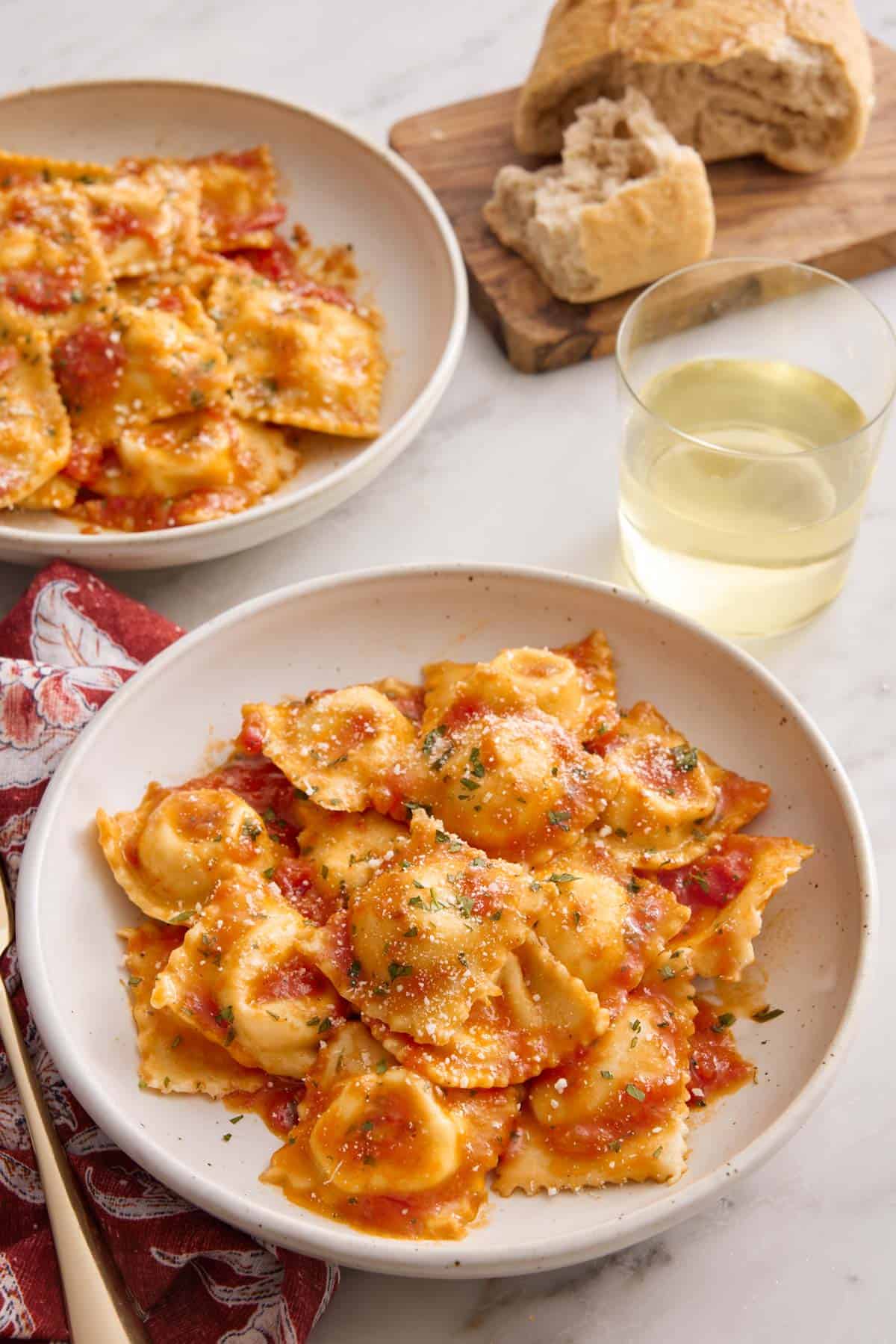

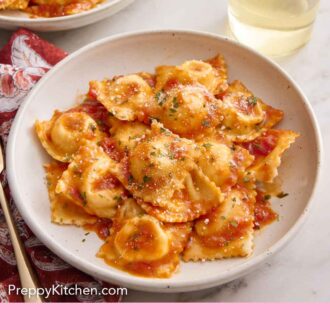
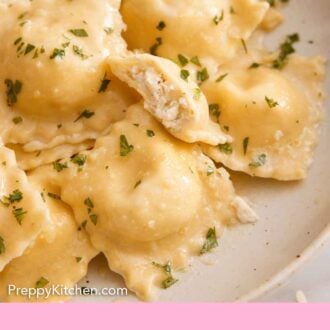


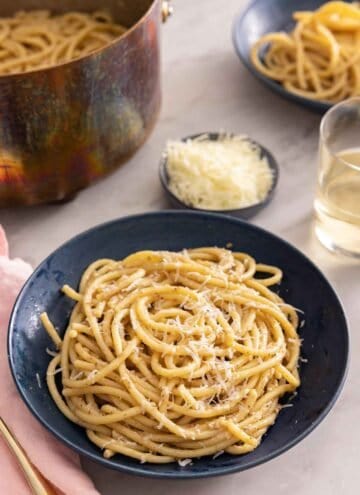
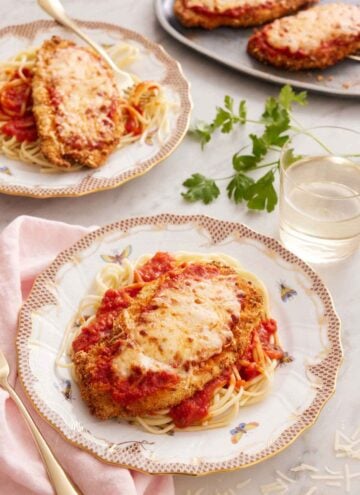




Leave a Reply